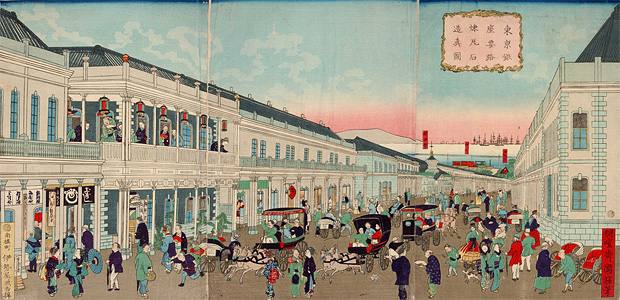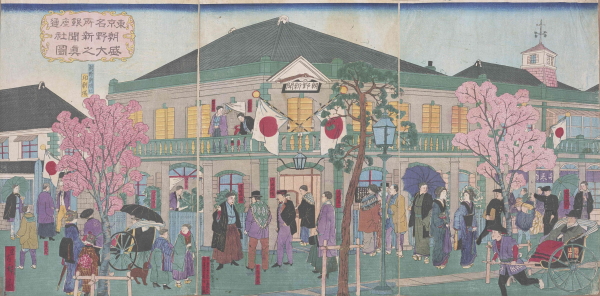A Visit in the Great Edo
A close-up on Edo castle / Cultural enlightenment' spotsEmergence of western-looking streets
Painted by Utagawa Kuniteru II 1873 (Meiji 6)
Ginza was a transformed town home to the first western buildings in Japan.. Brickwork streets were planned out in 1872 (the 5th year of Meiji period), which was the year when the railway was opened.
Ginza and Kyōbashi were burnt down that year by the Great Fire. Originally, the Meiji government planned to build Tokyo as a nonflammable city and Ginza was selected as a model district. Of course, one of the reasons why Ginza was chosen was due to its geographic condition in that it was close to the starting railway station, Shinbashi.
(Tokyo Meisho no Uchi Ginza-tsū Renga-zō Tetsudō Basha Ōfuku Zu)
Painted by Utagawa Hirosige III 1882 (Meiji 15)
The street called "ginza-dōri" (literally means "Ginza street") was completed in 1873 (the 6th year of Meiji period) and then the construction of the whole district was completed in 1877 (the 10th year of Meiji period). The three important major newspapers that were founded in Japan were headquartered in Ginza. There were over one hundred newspaper companies whose headquarters were in Ginza during the Meiji period. Ginza had only a small number of residents as the Japanese were not fond of the Western style atmosphere. However, the situation soon turned round 180 degrees and the district was developed rapidly, which is partially down to the fact that the media published newspapers and nishiki-e vigorously that led to the transformation of the people's way of thinking.
* To view more explanation, please click the each image.




